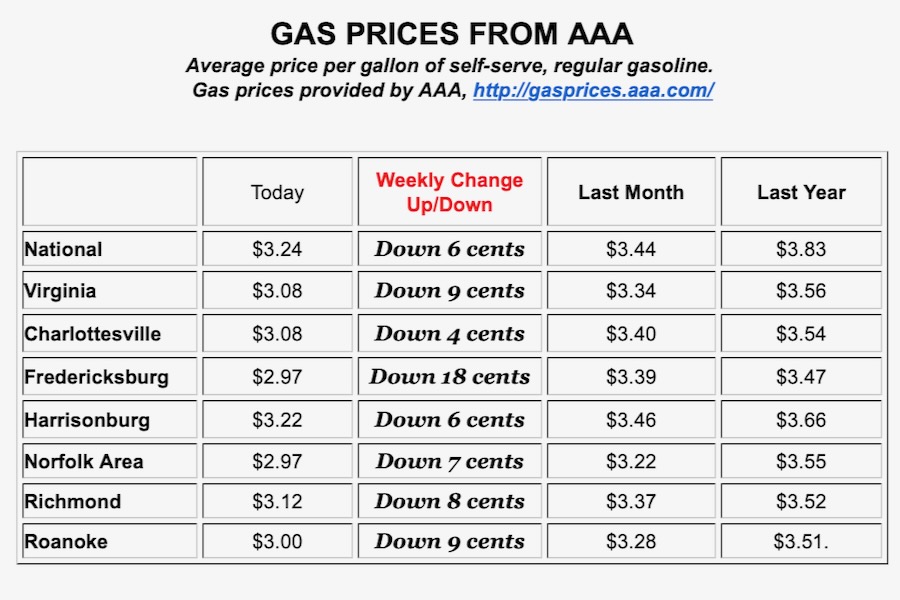The national average for a gallon of gas kept up its torrid pace of decline, sinking six cents since last week to $3.24. The primary culprits behind the dip are low demand and falling oil costs. Meanwhile, the national average cost for public EV charging finally moved after a static few months, ticking a penny higher.
“There are an ever-increasing number of states east of the Rockies that have some retail gas locations selling regular for under $3 a gallon, so drivers will have more in their wallets with autumn approaching,” said Morgan Dean, AAA Mid-Atlantic spokesperson. “Should the national average fall below $3, it will be the first time since May 2021.”
With an estimated 1.2 million AAA members living in households with one or more electric vehicles, AAA tracks the average kilowatt-per-hour cost for all levels of public charging by state. Today’s national average for a kilowatt of electricity at a public charging station is 35 cents.
According to new data from the Energy Information Administration (EIA), gas demand fell last week from 8.93 million b/d to 8.47. Meanwhile, total domestic gasoline stocks rose 219.2 to 221.6 million barrels, and gasoline production decreased last week, averaging 9.4 million barrels per day. Tumbling gasoline demand and oil costs will likely keep pump prices sliding.
Today’s national average for a gallon of gas is $3.24, 20 cents less than a month ago and 59 cents less than a year ago. Virginia’s average today of $3.08 is down 9 cents in a week, down 26 cents in a month and down 48 cents from this day a year ago. There are dozens of localities in Virginia that now have gas price averages below $3/gallon. Bland County has the cheapest locality average in the state today at $2.69.

Oil Market Dynamics
t the close of Wednesday’s formal trading session, WTI rose by $1.56 to settle at $67.31 a barrel. The EIA reports that crude oil inventories increased by 0.8 million barrels from the previous week. At 419.1 million barrels, U.S. crude oil inventories are about 4% below the five-year average for this time of year.
Gas
Since last Thursday, these 10 states have seen the largest changes in their averages: Ohio (-17 cents), Indiana (-14 cents), Delaware (-14 cents), South Carolina (-13 cents), Kentucky (-12 cents), Illinois (-12 cents), Maryland (-11 cents),61), Texas (-11 cents), Wisconsin (-11 cents), and North Carolina (-10 cents).
The nation’s ten least expensive gasoline markets are Mississippi ($2.76), Tennessee ($2.78), Texas ($2.79), South Carolina ($2.80), Alabama ($2.82), Oklahoma ($2.83), Louisiana ($2.86), Kentucky ($2.87), Arkansas ($2.88), and Missouri ($2.93).
Electric
The nation’s top 10 least expensive states for L2 commercial charging per kilowatt hour are Kansas (22 cents), Missouri (24 cents), Delaware (26 cents), Wisconsin (28 cents), Nebraska (29 cents), Texas (29 cents), Michigan (30 cents,) North Dakota (30 cents), Utah (31 cents) and Massachusetts (31 cents).
The nation’s top 10 most expensive states for L2 commercial charging per kilowatt hour are Hawaii (57 cents), West Virginia (45 cents), Idaho (43 cents), Montana (42 cents), Arkansas (42 cents), New Hampshire (42 cents), South Dakota (41 cents), Kentucky (41 cents), Tennessee (41 cents) and Alaska (41 cents).





